It may not be Hawkins from Stranger Things, but Mumbai has its own niche underground community that’s playing Dungeons & Dragons
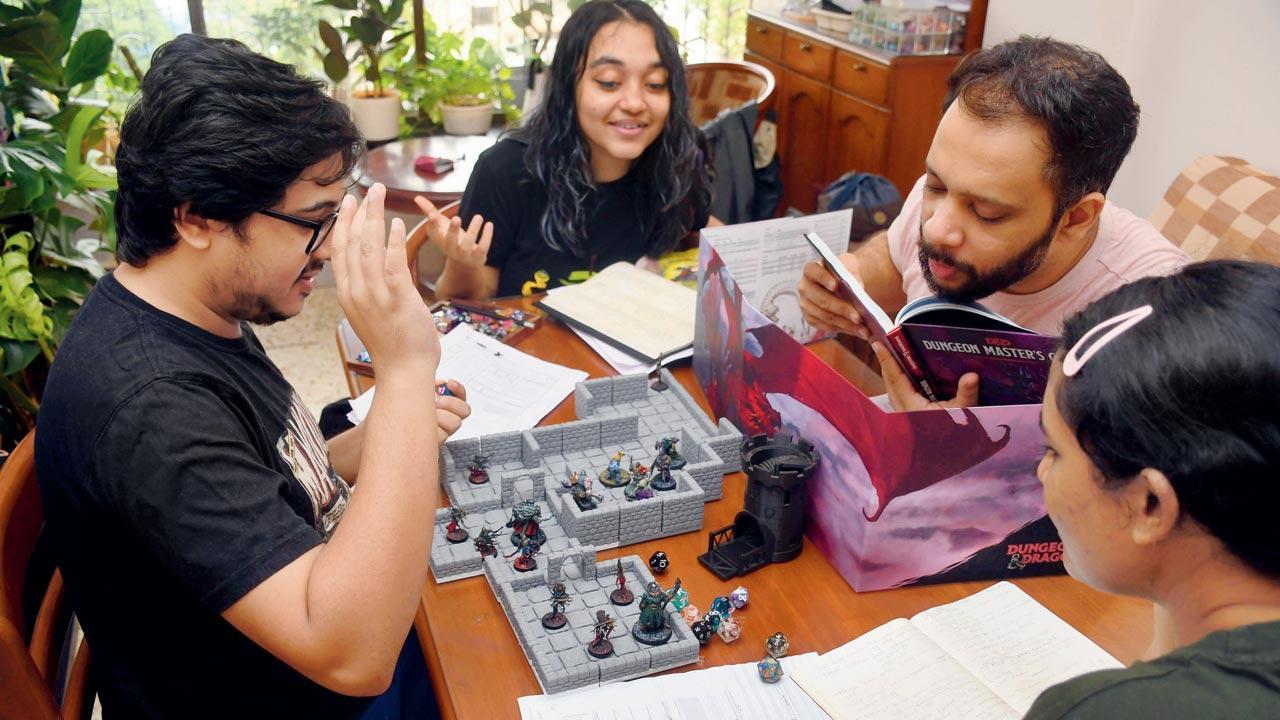
Indrani Ganguly playing Dungeons & Dragons. The game requires one Dungeon Master and at least two players. Pics/Ashish Raje
Mumbai-based Indrani Ganguly was 11 years old when she discovered and joined a niche role-playing community online. This international community introduced her to Dungeons & Dragons (D&D), touted to be the most common and easiest Table-Top Role-Playing Game (TTRPG). Though around since the 1970s, there has been resurgence in its popularity with shows such as The Big Bang Theory and Stranger Things. The game was designed by Americans Gary Gygax and Dave Arneson in 1974, and is strongly associated with the nerd/geek culture. Complex and rich in tasks and rules, it remains the game of only a few and is not as well-represented in the role-playing circles as characters from Marvel and the DC Comics universe.
ADVERTISEMENT
In 2016, Samir Alam, India’s first TTRPG/D&D publisher and creator of the collaborative storytelling platform Panic Not! got into D&D after watching it on the show, The Big Bang Theory. “You need to read the books and know the rules,” says the 35-year-old. “It is a daunting task for anybody. Eventually, I came across one of the books and was fascinated. The whole structure of the game was nothing like I had assumed,” he says.
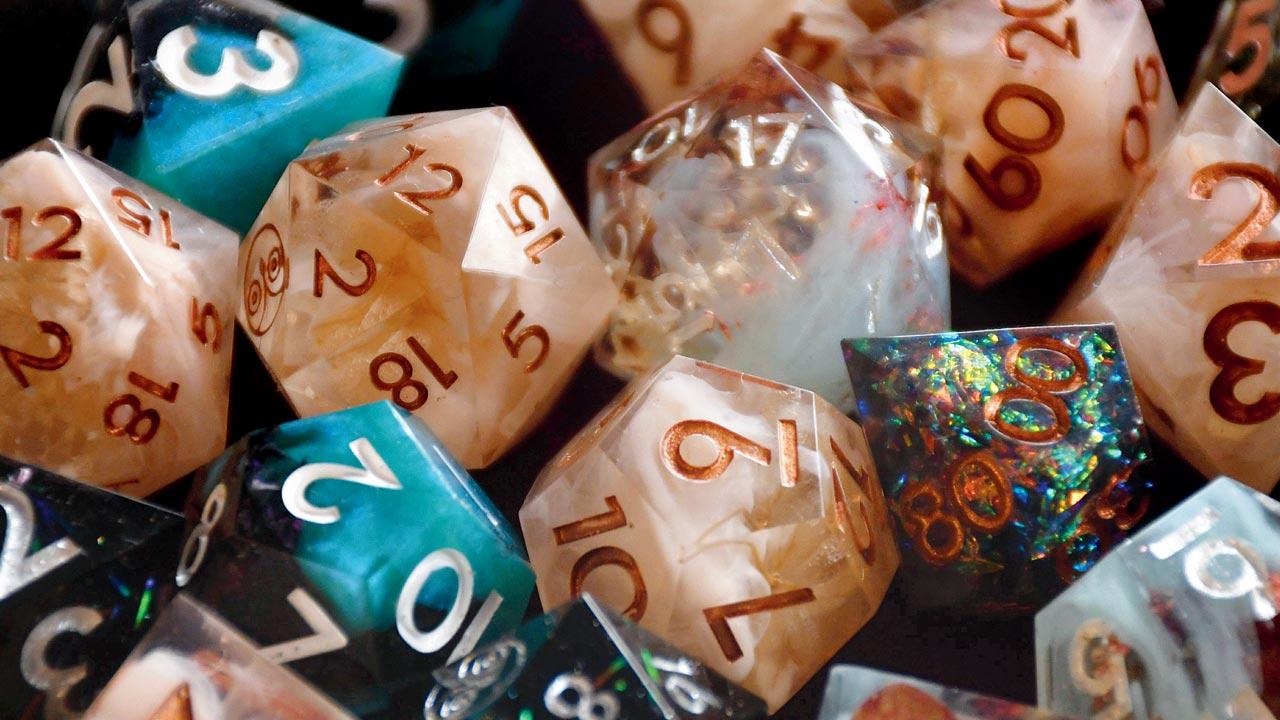 Indrani Ganguly has been making handmade dice which are a crucial part of a D&D game
Indrani Ganguly has been making handmade dice which are a crucial part of a D&D game
The game requires a Dungeon Master (DM) who heads the game. S/he is the game’s referee and storyteller, maintains the setting and the adventures. An ideal set-up for a D&D game would require at least two additional players, if not more. “Think of it as being a writer,” says Alam, who is the DM, “where I create the story and the world and draw people into it. The players make decisions as the characters. An average session lasts three to four hours, and longer campaigns go on for months, and even years.
“I get the ability to share this world with people, to tell a story and engage them. It’s the same satisfaction the writer of a movie or TV show would have. Only here, I get to see people’s eyes light up the moment they get the essence of the character I have created.”
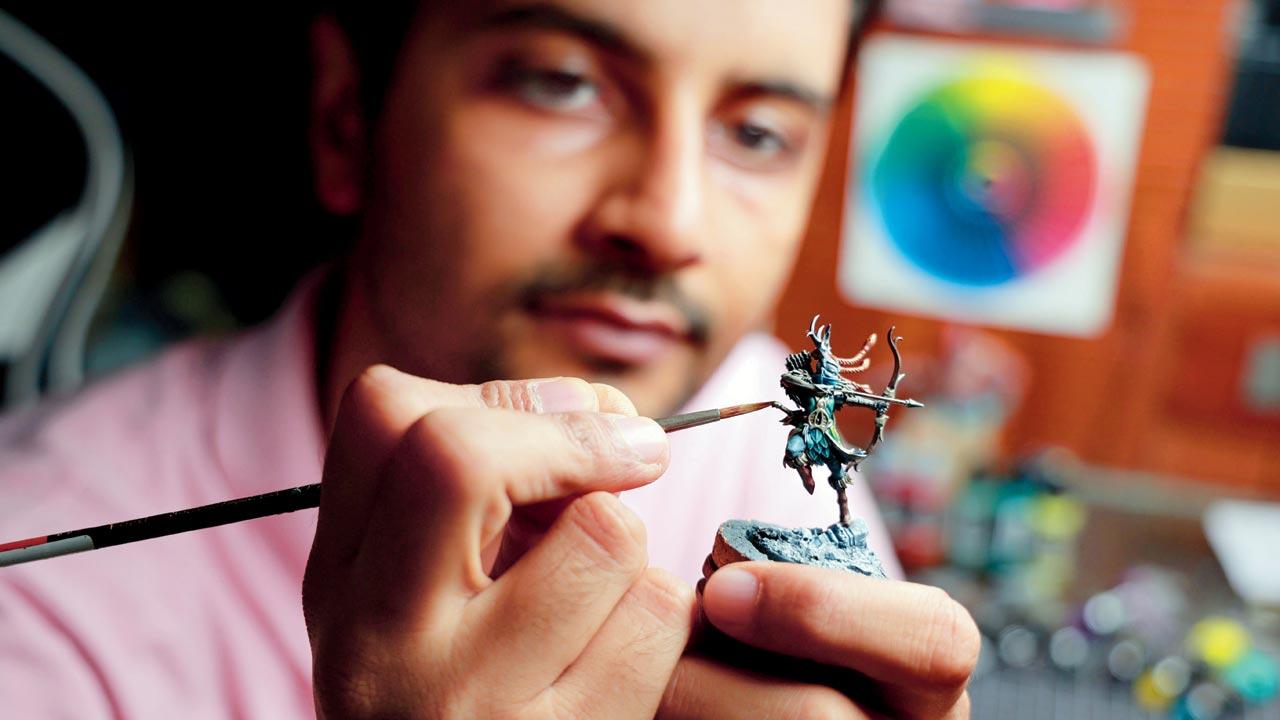 Rachit M prints miniatures in his 3D printer and has been painting them since 2016
Rachit M prints miniatures in his 3D printer and has been painting them since 2016
When Ganguly was first drawn into this universe, the community in Mumbai was tiny and had mostly old-school gamers. It also wasn’t as accessible as it is now.
Rachit M, a 36-year-old businessman, confirms, adding, “Six to seven years ago, the community wasn’t even a quarter of the size it is now.” Modi got into D&D around 2014-15, but couldn’t find fellow players locally. Since D&D is a social game, finding participants can be a task. He spread the word through friends, and was finally able to gather a few friends to play with, which ballooned eventually.
Panic Not! played an important role in bringing people of the fragmented Mumbai group together. Currently, there is a semi-active Whatsapp group, a Telegram group and a few Discord servers. Mahim-based Ganguly is also the co-founder of Desis & Dragons, India’s largest TTRG community, with more than thousand members. Most D&D players in Mumbai now know each other.
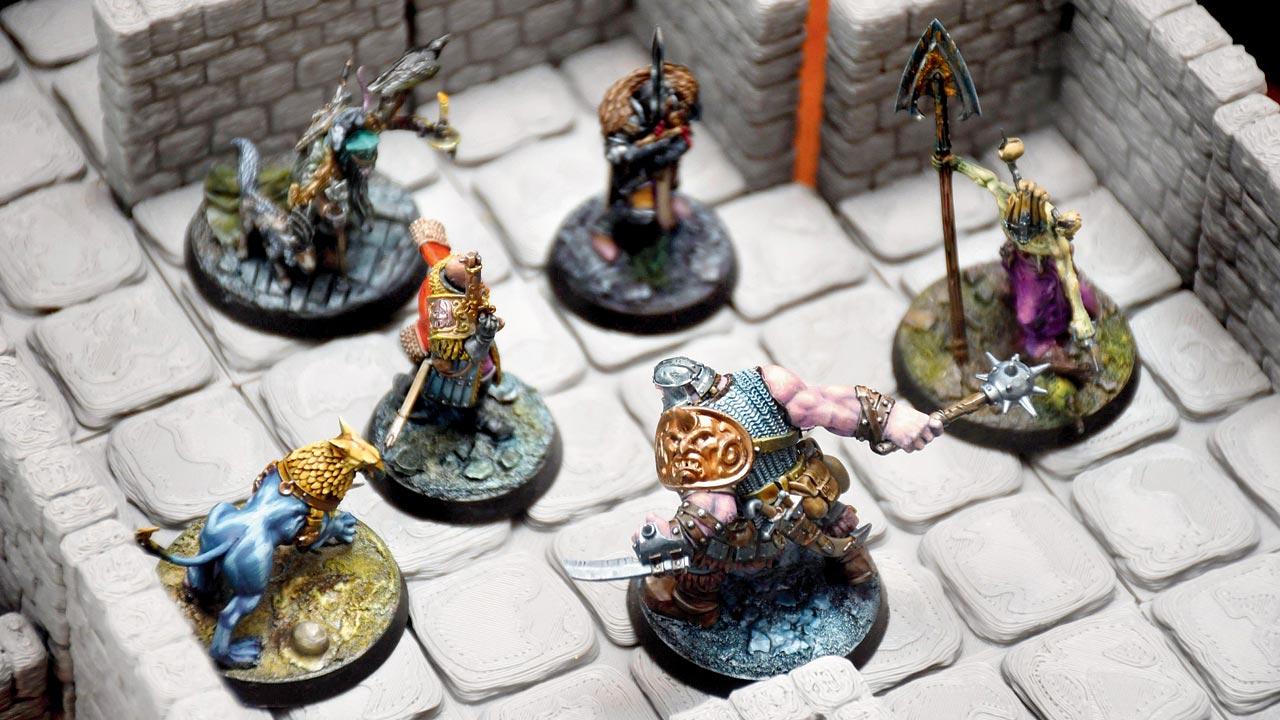 Investing in miniatures and other items such as maps and dice is not mandatory, but it helps enhance the experience
Investing in miniatures and other items such as maps and dice is not mandatory, but it helps enhance the experience
Discord made it easier to find other players and banished having to buy game accessories such as dice, maps and figurines, which can be expensive because they are mostly imported. “You could just play online,” says 21-year-old Ganguly, adding Desis & Dragons specifically connected the Indian enthusiasts. For Alam, D&D was an avenue for socialisation. “I was never an extrovert,” the Worli-based resident says. “In role-play, you share [only] a part of yourself.”
Panic Not’s! model revolves around offline meet-ups. Prior to the pandemic, they would host weekend sessions with eight to 10 people attending. The monthly convention saw almost a 100 people. “It is a communal activity to meet like-minded people,” says Alam. “Our entire focus is on an in-person experience to reap the mental health and inter-personal social benefits of the game.”
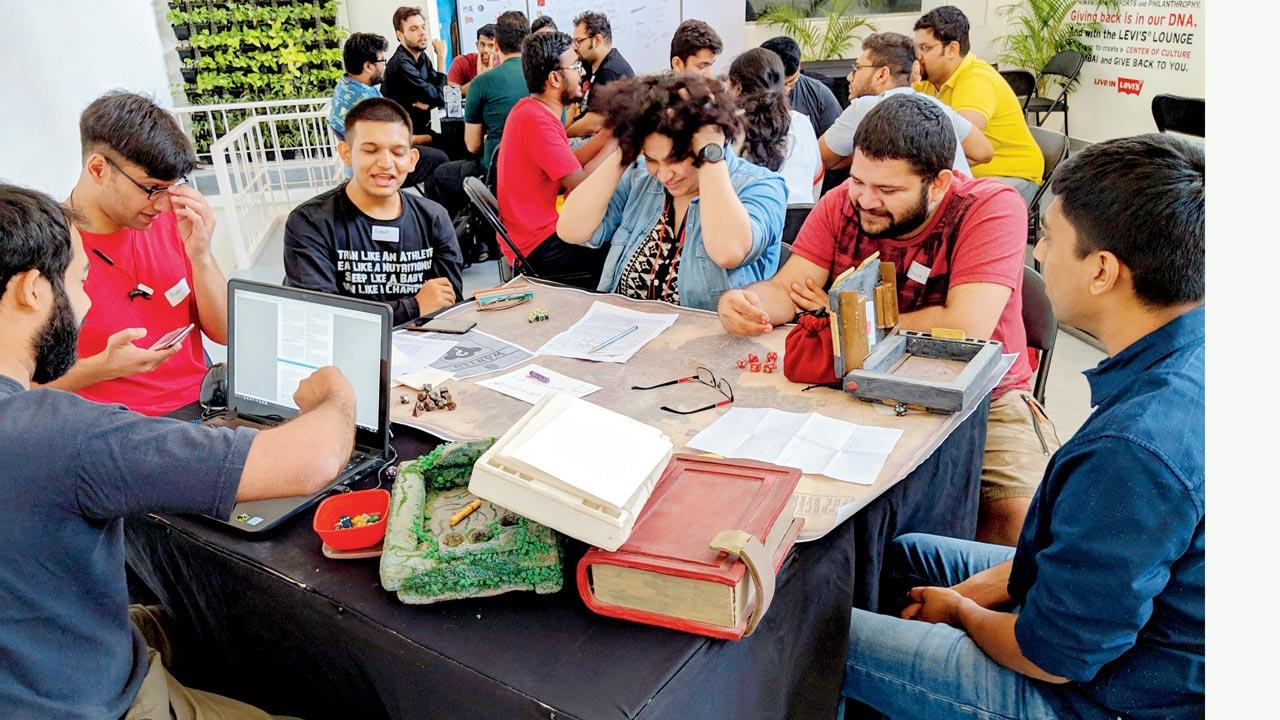 Panic Not! hosts offline D&D events every weekend either at someone’s home or at cafés or public places, that have around eight to 10 people per session
Panic Not! hosts offline D&D events every weekend either at someone’s home or at cafés or public places, that have around eight to 10 people per session
Alam believes that the online medium doesn’t have the psychological and physiological benefit of offline events. “People who participate online are more problematic and varied as there is a sense of anonymity, which leads to lack of trust, which hampers connections and without connections, you can’t have a community,” he says. They resumed offline sessions in May.
In pre-COVID times, they would also organise art exhibitions that gave a platform to hobbyists such as Ganguly and Rachit. Ganguly has a collection of 60-80 sets of dice, and over a 100 D20 dice (signature 20-sided dice). Last year, she began making customised 3D dice, making her India’s first dice-maker.
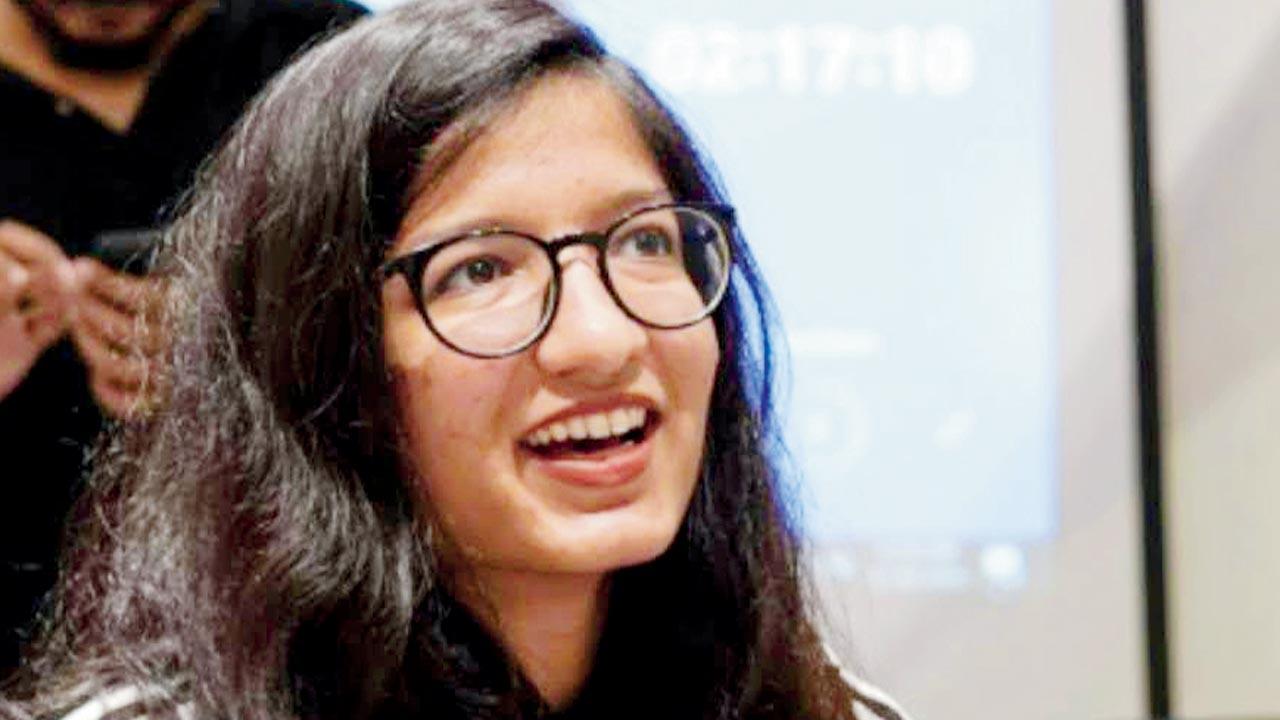 Nicole Ellis
Nicole Ellis
In 2016, Rachit began collecting figurines that represent players on the board, and painting them. He now prints his own minis on a 3D printer and painstakingly paints them. “I do not have an art background,” he says. “I learnt everything from YouTube and the community online,” says the Bandra-resident. He leans towards a proper set-up with figurines and other accessories. However, this isn’t strictly necessary. One can start with just a paper and a pen, or a smartphone. “You can choose the amount of investment you make,” says Ganguly.
The age demographic is vast. Children as young as seven years old attend Alam’s offline sessions, as do men in their late 50s. Like most games, D&D is more popular among men than women.Nicole Ellis, a 27-year-old advertising professional from Chembur, is an exception. She has been playing since 2018, and she and her female friends do not play damsels in distress. “We play as equals,” she says. “There is a conscious attempt to not be offensive and rude. We craft safe spaces so that everyone is considered.” Ellis spends roughly 10 hours a week in the D&D universe. “I’m hooked to being in a fantasy world where I can go on adventures, and take risks which I would not in the real world. There are no restrictions,” she says. D&D is referred to within the community as ‘theatre of the mind.’ “It’s better to be delusional in a crowd, than by yourself,” signs off Alam.
 Subscribe today by clicking the link and stay updated with the latest news!" Click here!
Subscribe today by clicking the link and stay updated with the latest news!" Click here!







